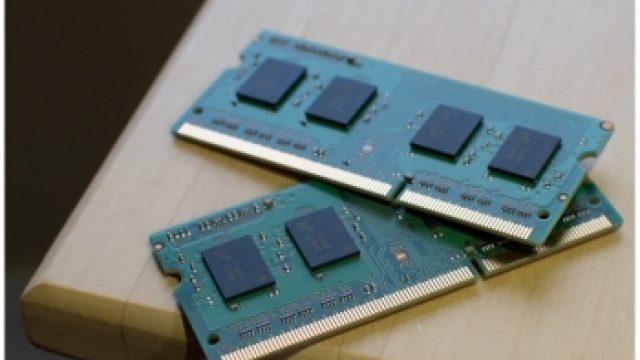In the fast-paced world of technology, laptops have become an indispensable part of our lives. As our demands on these portable devices grow, so does the need for better performance.
One common way to enhance a laptop’s performance is by upgrading its RAM.
When it comes to upgrading, a question that often arises is, “Can I use 8GB and 16GB RAM together in a laptop?” Let’s dive into this topic and explore the possibilities, pros, and cons.
Mixing RAM Sizes: Laptop Compatibility
Laptops are not all created equal, and their internal components can vary significantly.
When it comes to RAM, compatibility is a crucial factor to consider.
Mixing different RAM sizes can be a bit tricky, and it’s essential to check if your laptop supports such a configuration.
Some laptops might be picky about the RAM modules they accept, while others are more flexible.
8GB and 16GB RAM Combo: Pros and Cons
Using a combination of 8GB and 16GB RAM in your laptop has its own set of advantages and disadvantages.
One significant advantage is the potential cost savings, as 8GB RAM modules are generally more affordable than their 16GB counterparts.
Additionally, if your laptop’s maximum RAM capacity is 24GB, combining an 8GB and a 16GB module allows you to reach that maximum without replacing the existing 8GB module.
However, there are also potential downsides to this approach. Mixing RAM sizes might lead to compatibility issues, reducing the overall system performance or even causing instability.
Furthermore, in some cases, the laptop might not boot up at all if the RAM modules are not compatible.
Dual RAM Configuration: Performance Impact
Now, let’s talk about the performance impact of using a dual RAM configuration with 8GB and 16GB modules.
In theory, a total of 24GB of RAM should improve your laptop’s multitasking capabilities, allowing you to run more applications simultaneously and reducing the chances of running out of memory.
However, the performance boost might not always be significant, as it heavily depends on the applications you use and their memory requirements.
Some applications might not fully utilize the additional RAM, and in such cases, the performance gain might be minimal.
On the other hand, if you frequently engage in memory-intensive tasks like video editing or running virtual machines, the extra RAM can make a noticeable difference.
Related Article: Is 2 4GB Ram Better Than 1 8GB: Comparison and Analysis
Laptop Memory Upgrades: Dos and Don’ts
When upgrading your laptop’s memory, there are certain dos and don’ts you should keep in mind. First and foremost, always refer to your laptop’s user manual or manufacturer’s website to ensure you are using compatible RAM modules.
It’s essential to match the specifications, such as speed and type (DDR3, DDR4, etc.), to avoid any compatibility issues.
Additionally, always buy RAM modules from reputable brands or authorized dealers to guarantee their quality and authenticity.
Beware of counterfeit or low-quality RAM, as it can lead to various problems down the road.
Balancing RAM: 8GB + 16GB in Your Laptop
If you decide to go ahead with the 8GB and 16GB RAM combo, it’s crucial to balance the RAM configuration properly. Placing the larger module in the primary slot and the smaller one in the secondary slot might be a good approach.
This arrangement ensures that the larger module is used for more memory-intensive tasks, maximizing your laptop’s performance.
Memory Modules: Compatibility Explained
The science behind RAM compatibility lies in the laptop’s memory controller, which manages how the RAM modules interact with the system.
When you mix different RAM sizes, the memory controller might have trouble managing the different capacities, leading to potential compatibility issues.
To overcome this, some laptops feature a technology known as “flex mode” or “asymmetric dual-channel,” allowing them to operate both modules in dual-channel mode up to the capacity of the smaller module, and the rest in single-channel mode.
While this can help avoid compatibility problems, it’s still essential to check if your laptop supports such a feature.
Optimizing Laptop Performance: RAM Fusion
To optimize your laptop’s performance when using 8GB and 16GB RAM together, you can consider a technique called “RAM fusion” or “FlexMemory.”
Some motherboard manufacturers offer this feature, which allows you to combine the capacities of different RAM modules into a single pool of memory.
This way, you get the best of both worlds without worrying about compatibility issues.
However, keep in mind that this feature might not be available on all laptops, so check your laptop’s specifications or consult the manufacturer to see if it’s an option for you.
Related Article: Can I Use Two Different Brand of RAM: RAM Compatibility
8GB and 16GB RAM in Harmony: Best Practices
When pairing 8GB and 16GB RAM, following some best practices can help ensure a smooth experience:
- Match Speeds and Types: Use RAM modules of the same speed and type for optimal compatibility.
- Use Identical Brands: If possible, use two RAM modules from the same brand to reduce compatibility risks.
- Update BIOS: Keeping your laptop’s BIOS up to date can improve RAM compatibility and performance.
- Test Stability: After installing the new RAM, run stress tests to ensure stability and identify any issues.
- Backup Data: Before any upgrades, back up your important data to avoid data loss in case of any unexpected problems.
RAM Upgrade Guide: Blending Different Sizes
Upgrading your laptop’s RAM can be a straightforward process if you follow the right steps. Here’s a brief guide to blending different RAM sizes:
- Check Compatibility: Confirm your laptop’s maximum RAM capacity and the supported RAM types.
- Purchase the Right RAM: Buy compatible RAM modules with the right capacity, speed, and type.
- Ground Yourself: Before handling the RAM modules, ground yourself to prevent electrostatic discharge.
- Install the RAM: Carefully insert the RAM modules into their respective slots, applying gentle pressure until they click into place.
- Boot and Verify: After installation, boot up your laptop and verify that the RAM is detected correctly.
- Run Tests: Run memory tests and benchmarking tools to ensure the RAM is functioning correctly.
Maximizing Laptop Memory: Mixing 8GB & 16GB
In conclusion, the answer to whether you can use 8GB and 16GB RAM together in a laptop is a bit nuanced. While it is technically possible in some cases, it’s essential to ensure compatibility to avoid potential issues.
The performance impact of such a configuration will depend on your specific use case and the applications you run.
Before diving into a RAM upgrade, do your research, follow best practices, and consider consulting with an expert if you are unsure about compatibility or installation.
When done right, blending different RAM sizes can be an effective way to maximize your laptop’s memory capacity and enhance its overall performance.
The Science of Laptop RAM Compatibility
When it comes to laptop memory, compatibility is a complex topic governed by the laptop’s architecture and memory controller.
Mixing different RAM sizes can be akin to blending different puzzle pieces, and without the right fit, you risk compromising the entire system’s stability and performance.
8GB + 16GB: A Winning Laptop Combo?
While using a combination of 8GB and 16GB RAM can offer potential benefits, it’s essential to weigh the pros and cons carefully.
Understand your laptop’s limitations, consider your typical usage scenarios, and make an informed decision based on your needs.
Laptop Memory Dilemma: Mixing Capacities
The decision to mix 8GB and 16GB RAM in a laptop often boils down to balancing cost savings and performance gains.
In a world where technology evolves rapidly, it’s crucial to find the right balance to stay ahead of the curve without compromising the integrity of your laptop.
RAM Pairing: Boosting Laptop Efficiency
Properly pairing 8GB and 16GB RAM can create a harmonious blend that boosts your laptop’s efficiency.
The right combination can unlock your laptop’s true potential, enabling it to handle even the most demanding tasks with ease.
Successful Laptop RAM Upgrades: Tips & Tricks
A successful laptop RAM upgrade requires careful planning, meticulous research, and adherence to best practices.
Armed with the right knowledge and approach, you can turn your laptop into a performance powerhouse without breaking the bank.
FAQs About Can i Use 8GB and 16GB Ram Together in Laptop
Can I mix an 8GB and a 16GB RAM both are DDR4 2666MHz together in a laptop?
Yes, you can mix an 8GB and a 16GB DDR4 2666MHz RAM in a laptop. However, the larger module will only utilize 8GB, resulting in a total of 24GB RAM.
Can you mix different RAM sizes?
Yes, you can mix different RAM sizes, but it’s essential to ensure they are compatible with your system.
The larger module may only work in single-channel mode if sizes are unequal.
Can I use 2 different RAM brands?
Using two different RAM brands can work, but it’s better to use identical RAM for optimal compatibility and performance.
Can I mix 8 and 16 GB RAM on Reddit?
On Reddit, it is often discussed that mixing 8GB and 16GB RAM modules is possible. However, it’s recommended to use similar capacities for best results.
Is it OK to mix different RAM speeds?
Mixing different RAM speeds may lead to compatibility issues, and the faster module may downclock to match the slower one, impacting overall performance.
Can 8GB and 16GB run in dual channel?
Combining 8GB and 16GB RAM will not run in dual-channel mode since dual-channel requires identical modules. Instead, they will operate in single-channel mode.
Can you dual channel different RAM sizes?
Dual-channel requires identical RAM sizes, so using different sizes will prevent you from utilizing the dual-channel memory setup.
Does RAM need to match?
For optimal performance, it’s best to use identical RAM modules in terms of capacity, speed, and brand.
Does it matter which slot I put my RAM in?
The exact slot configuration matters for dual-channel memory. Consult your motherboard manual to determine the appropriate slots for dual-channel operation.
Can you mix laptop RAM brands?
Mixing laptop RAM brands can work, but it may lead to compatibility and stability issues. It’s recommended to use the same brand for both modules.
Is 64GB RAM overkill?
Whether 64GB RAM is overkill depends on your specific needs. For average users and gamers, 64GB is excessive, while content creators and professionals may benefit from it.
Can you mix DDR3 and DDR4 RAM?
DDR3 and DDR4 are not compatible due to physical and technical differences. Mixing them will not work in any system.
Can I add 16GB RAM along with 8GB stock RAM?
Yes, you can add a 16GB RAM alongside an 8GB stock RAM, but they will operate in single-channel mode and not dual channel.
Can I use 2x 8GB and 2x 16GB?
Using 2x 8GB and 2x 16GB RAM is possible, but it requires a motherboard with four RAM slots. The larger modules may operate in single-channel mode.
Final Thoughts About Can i Use 8GB and 16GB Ram Together in Laptop
Using 8GB and 16GB RAM together in a laptop is technically possible, but it comes with limitations.
While they may work, they won’t run in dual-channel mode due to different sizes. This setup may result in slightly reduced performance compared to using identical modules.
It’s crucial to ensure compatibility with your laptop’s specifications before attempting this configuration. For optimal results, it’s recommended to use matching RAM modules, either two 8GB or two 16GB sticks.
Investing in a higher-capacity, identical RAM configuration will provide better overall performance and stability for your laptop’s tasks and applications.


